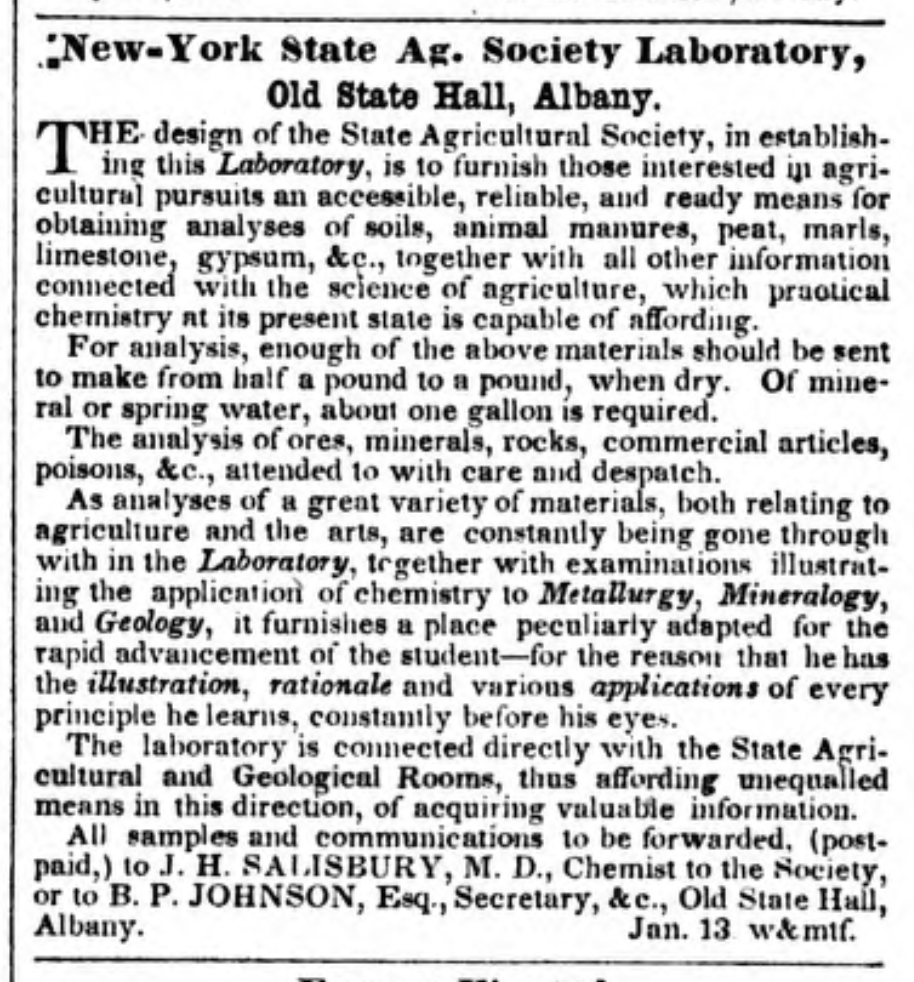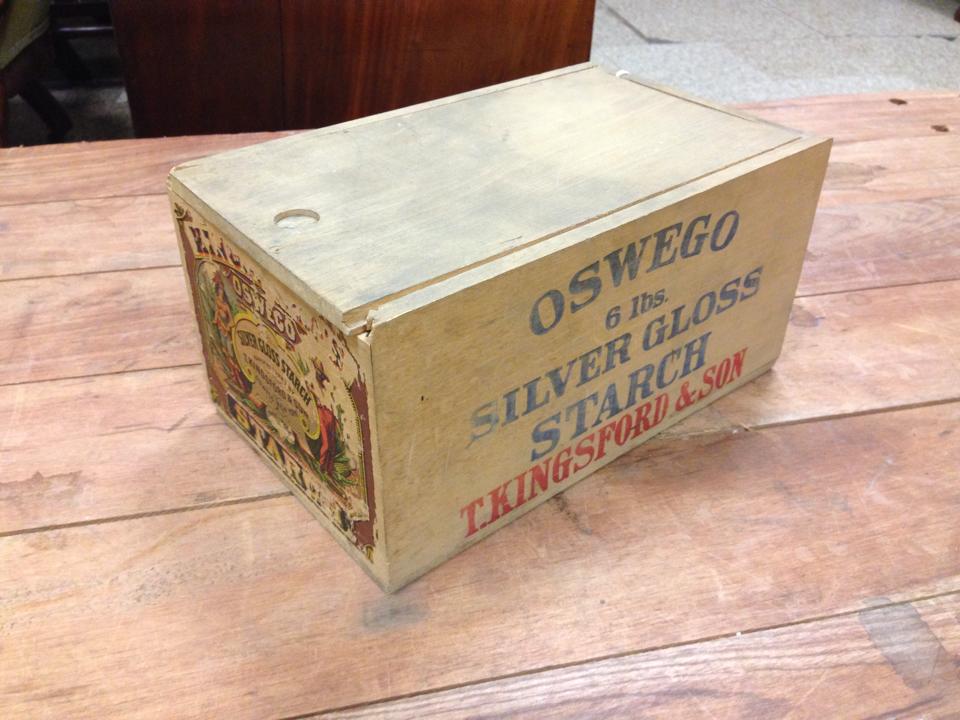OR, WHERE TO SEND YOUR CORN STARCH

Earlier this week we talked about how the original State Museum was in a space crunch from the first. It couldn’t have helped that it shared space with the New York State Agricultural Society in Geological Hall at State and Lodge streets. You might wonder just how much space an agricultural society could take up – but in fact it was every bit as busy, and laden, as the museum was.
In an 1853 notice in Albany’s The Country Gentleman, the State Agricultural Society gave notice of its laboratory facilities, which would provide analyses of soils, manures, peat, marls, limestone, gypsum, &c., “together with all other information connected with the science of agriculture, which practical chemistry at its present state is capable of affording.” In order to get that analysis, all you had to do was send them your materials. “For analysis, enough of the above materials should be sent to make from half a pound to a pound, when dry. Of mineral or spring water, about one gallon is required.”
So the Agricultural Society had people sending them their dirt. That wasn’t all.
At an 1851 meeting of the Society (Ezra Prentice, President), the Executive Committee expressed thanks “most cordially tendered to the respective donors and contributors” of some of the following items (recorded in this mis-titled Google book that contains the Journal of the New York State Agricultural Society):
- E.A. Doolittle, Esq., Albany, samples of farina, from Indian corn, by Stafford’s steam drying process, with directions for preparation and use.
- Dr. Kirkpatrick, Inspector National Schools in Ireland, Report of the Commissioners of National Education in Ireland for 1849, a valuable document of 320 pages, folio.
- E.H. Ernst, Cincinnati, sample of a new and celebrated variety of winter wheat from England; it is said to have yielded in England, nearly double that of the ordinary varieties. Mr. Hall has carefully tested and will give the results. (We are much indebted to Mr. Ernst for this sample.)
- Homer Adams, address by Valentine Mott, delivered at the College of Physicians and Surgeons, N.Y., Nov. 7, 1850.
- Wm. Baker, application for premium on barley, at annual meeting.
- W.D. Osborn, Port Byron, scions of the Whiting apple, a fall seedling, said to be of a very superior character, highly commended by David Thomas.
- Kingsley & Longbottom, 235 Broadway, N.Y., American Practical Mechanics’ Pocket book and Almanac, or the Scientific Year Book of Facts, for 1851; published annually. This is a very useful and valuable work, and should be possessed by every mechanic, and will be found interesting and useful to every class of citizens. (108 pages.)
- Master Hyman Herman, Albany, fine specimen of Dog-tooth Spar, from the Mississippi river, similar to specimens found at Lockport, in this State.
- F.R. Elliott, Esq., Cleveland, Ohio, box of apples for winter exhibition, and samples of corn oil, and starch.
- Charles Lee, Penn-Yan, box of Wagener apples, for winter exhibition.
- Dr. P.B. Nixon, Watervliet, left as a matter of curiosity, a pair of children’s shoes, made in Dutchess county in 1787, and worn by Polly Rider, now a resident of this county. They give a striking illustration of the advance made in this branch of business, when compared with the work of the present day.
- E.M. Bradley, East Bloomfield — Northern Spy and “Cypress” apples for winter exhibition. Statements of farm crops, viz., Oats, Peas and Barley.
- Oswego Starch Company — Box of corn Starch.
- Joseph T. Chamberlain, Superintendent N.Y. Institution for the Blind forwarded for the museum, a fine display of willow ware, paper boxes, &c., the work of the inmates of that most excellent institution.
- Valentine Halleck, North East, Papers for Prem. on Ruta Bagas.
That was not nearly all. So you can see how there might not have been a lot of room for the Cohoes Mastodon in the old Geological Hall.
UPDATE!
The State Museum would have you know that they still have the box of Oswego corn starch, and can prove it:


Leave a Reply